STEM ACTIVITIES FOR FIRST GRADE
Children are naturally curious and love to explore. That is why STEM activities for first grade are so important! STEM activities encourage students to take part in hands-on learning, which allows students to retain information better. It also helps make learning fun!
While the Acronym STEM was first coined by The National Science Foundation in the 1990s, STEM became an education buzzword around 2011. This was a result of President Obama encouraging schools to prepare students for a 21st century world. This resulted in a shift in education. While math and science had always been part of a school curriculum, they became the focus of curriculum planning. In addition to putting the spotlight on these two subjects, a new push for including educational experiences around technology and engineering emerged.
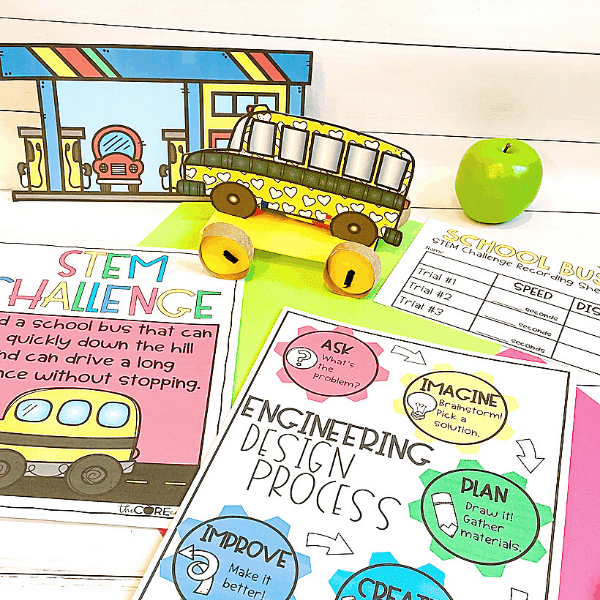
While some teachers were excited for this new push, many teachers were also frustrated. Especially elementary teachers, and English Language Arts and Arts teachers. Many felt like the importance of their content was either being overlooked or they were being asked to reinvent what they had taught for many years (that had proven effective).
Whatever group you fall into – excited, frustrated, or even confused – we are here to help you learn more about STEM AND answer common questions! What is STEM? Why is it important in elementary school? How can you make STEM part of literacy and the arts?!
Keep reading to learn more about why the buzz around STEM continues to grow in schools, and how you can effectively incorporate STEM activities in your classroom!
What is STEM?
Since the word stem originated from the National Science Foundation, you can probably already guess that it has something to do with Science. It does indeed! It also includes technology, engineering, and math: STEM.
While most people are familiar with what each part of this acronym stands for, there’s a lot of confusion around how they are all supposed to be used in education. Even more so, why is there such a push for it to be taught in schools? Especially elementary school?
One of the common misconceptions to address is that STEM is not just teaching each of these subjects individually. Instead, true STEM is a combination of the philosophies seen in all four of these. It’s a teaching philosophy that integrates all four disciplines together that allows for real world application. At its core, STEM is about real world application, rather than just academic learning.
This is why a true STEM curriculum is so beneficial to students of all ages. It encourages real world thinking and application, and challenges students to make thoughtful connections across disciplines.
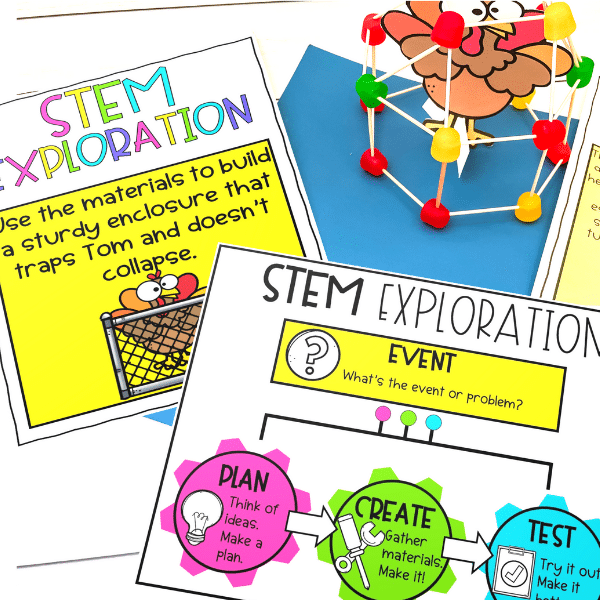
WHY IS STEM IMPORTANT IN ELEMENTARY SCHOOL?
A lot of teachers feel that STEM is a phase. We can’t necessarily disagree with that perspective, as education tends to swing from one popular ideal to another every decade or so. However, while the term “STEM” may become less influential in schools over time, we believe the philosophies will – and should – remain in education.
Even in elementary school? Yes, even in elementary school! Even for students as young as first and second grade? Yes, especially the younger generation!
But isn’t it too early for students to be worried about what career they are going to choose as an adult? We can’t answer this for everyone, but personally we don’t feel a first or second grader needs to declare a career path! However, teaching about STEM doesn’t have to be career driven.
As students get into high school, it may be that they choose career focused courses related to science, technology, engineering, and math. At the elementary level though, your role is to simply expose students to these exciting worlds!
In your position, you get the joy of seeing students find a connection with these different areas of discovery! For some students, it may lead to a career twenty years down the road. For others, it will be a fun memory of learning about different topics as a kid. For all, it will challenge them to think in new ways, to discover, and to grow as learners!
Check out STEM lesson plan examples!
STEM ACTIVITIES FOR SECOND GRADERS
So, how do you teach STEM in a first or second grade classroom? Whether you are looking for STEM activities for first grade, or STEM activities for second graders, we have provided some ideas below. Before we jump into how to incorporate science, technology, engineering, and math though – we want to talk about how to still incorporate Language Arts & Arts alongside STEM.
Earlier when we talked about what STEM is, we mentioned that a true STEM curriculum includes cross curricular instruction. One area that often gets overlooked when it comes to this important element though, since it doesn’t have its own letter, is literacy.
When you look up STEM online, you quickly get a response of the importance of teaching science, technology, engineering and math. What you don’t see though, is how important it is to teach literacy within these four subject areas.
In elementary school and beyond, tests – whether classroom based or standardized – require students to have strong reading skills. This includes skills that support comprehension of complex topics. This is especially important when demonstrating proficiency in complex areas like STEM.
Writing is also an essential skill in any subject area. Strong writing skills allow students to effectively communicate important concepts in ALL subject areas. Science, technology, engineering, and math are not exempt from a need for effective reading and writing skills. Therefore, in order to teach STEM effectively, you need to teach a comprehensive curriculum that includes literacy in each of these four areas.
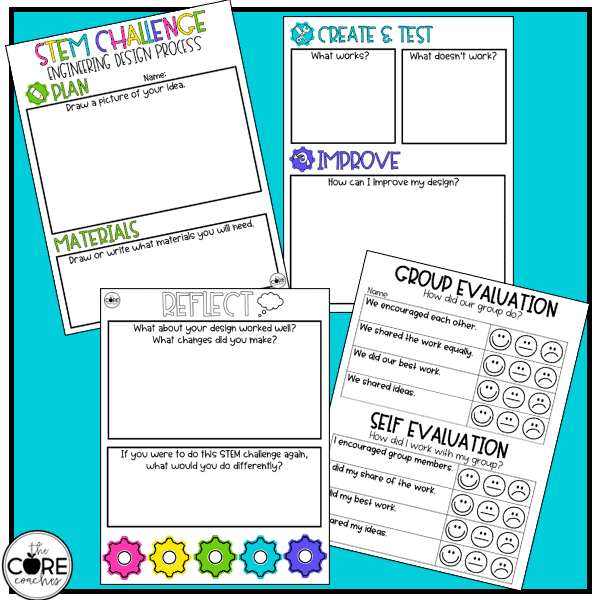
How do you include Language Arts & Arts with STEM?
Teaching specific vocabulary is an easy place to begin when teaching any new subject. At the beginning of any STEM unit, begin with teaching students important vocabulary words. Part of a STEM education curriculum is about seeing HOW things work in the real world. So go beyond simple words and definitions. One of the important elements of teaching vocabulary in a STEM curriculum is to teach students how words are used in context. The more you can teach vocabulary both in context and real world situations, the better.
- Have students use vocabulary words in their conversations during group work.
- Encourage students to use vocabulary words when they are reflecting on a process they went through (such as a final written reflection for a science experiment).
- Read books with students, both fiction and nonfiction, that include vocabulary words in the context of STEM.
Another way to include literacy as part of STEM development is to include STEM activities in traditionally “non-STEM” lessons. Read alouds are a great way to do this!
When we saw how certain books like The Most Magnificent Thing and After the Fall lend themselves to STEM inquiry, we couldn’t wait to add a STEM component to our traditional read alouds!
Adding a STEM activity to a read aloud allows you to maintain everything you LOVE about reading with your students, with the added bonus of a STEM component. By adding in an activity after reading, students get to implement what they read about in real life. How exciting is that!? Students get to do what they read about the characters in the book doing! This not only strengthens their hands on STEM skills, but also strengthens comprehension by helping students to connect with the stories on a personal level.
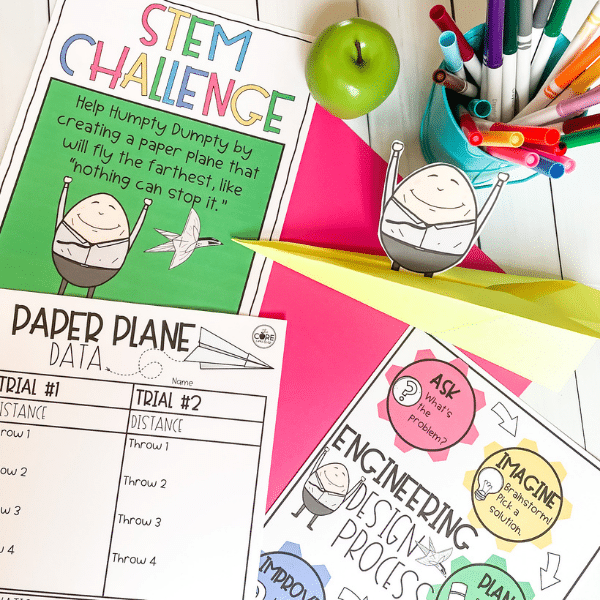
At the core of a true STEM education is hands-on learning. Which actually means A LOT of amazing opportunities to include the Arts in a STEM curriculum. This is why you may have seen a shift to the acronym in recent years. Now instead of STEM, many schools are encouraging STEAM: science, technology, engineering, ART, math.
In elementary school, giving students opportunities to create and build projects allows for this hands-on learning experience and creative expression.
NOT EVERY LESSON HAS TO BE A STEM LESSON
While STEM offers a lot of great learning experiences for your students, don’t feel like EVERYTHING you teach has to be STEM! There is still a need for teaching these core subjects individually.
When students are learning a new concept, they benefit from focusing on ONLY that one concept. To become proficient in math, students need lessons that are focused on individual math concepts. Students need lessons focused only on science! Students need to enjoy reading a book, simply to enjoy reading a book! They need to enjoy the experience of art as purely art! Not every single lesson lends itself to being an effective STEM learning experience.
What we suggest is finding ways to include an element of STEM as a bonus to certain assignments, like our addition of designing and creating a paper plane at the end of the After the Fall Read Aloud. A great way to include STEM is to use it as part of a summative, or even formative, assessment. Creating a STEM assessment allows for that full integration of the different learning philosophies to be demonstrated. Once students have mastered key concepts in individual core areas, have them complete a project that requires them to apply understanding and development in all areas. Don’t forget to include a nod to the Language Arts or Arts as well!
Here are some great Distance Learning Activities for First Grade if you are looking for ways to expand learning outside the classroom.
Education is always changing, but what is always at the core of great teaching is helping students see how what they learn in school applies to the real world. So, even though STEM may be just a buzzword – the core values behind it are here to stay!
STEM PRODUCTS YOU MAY LIKE
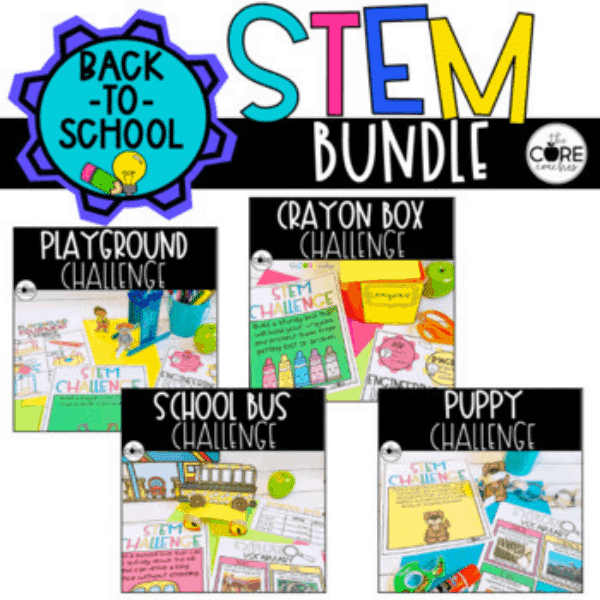
Back to School STEM Challenge Bundle

We'd like to send you a free interactive read-aloud that is easy to use in either a print or digital format!
Success! Now check your email to access your free interactive read-aloud.



